RECOIL OFFGRID Preparation Emergency Fuel Storage
In This Article
Fuel is a necessity for everyday life. We rely on it to heat our homes, cook our food, and power our vehicles, to name just a few uses. We quickly realize how dependent we are on different fuel sources when an emergency occurs, and we can’t get the fuel we need. Consider how many people were stranded recently when Hurricane Milton hit the west coast of Florida, just outside Tampa Bay. Still recovering from Hurricane Helene, they weren’t prepared for Milton’s arrival.
I bet those people could tell us a thing or two about the importance of fuel. Our ease of access to fuel has made us complacent and underprepared when it comes to recognizing how much we rely on power grids and gas stations. Whether you’re looking to go a little more off-grid or simply want to be prepared for the next emergency, it’s time we discussed fuel storage.
Fuel, by definition, is any substance used to produce heat or power by burning. With so much modern access and convenience, the guidelines of safely handling fuel so it’s ready to use when needed have become forgotten knowledge for some, even though fuel is becoming increasingly important in our day-to-day lives.

As we become more reliant on different types of technology, fuel becomes essential not only for heat and cooking but also for running engines and generating electricity for our gadgets. In this article, I'll discuss different types of fuel, how to safely store them for long-term use, and the pros and cons of each for various purposes to help you choose what fuel storage systems works best for you.
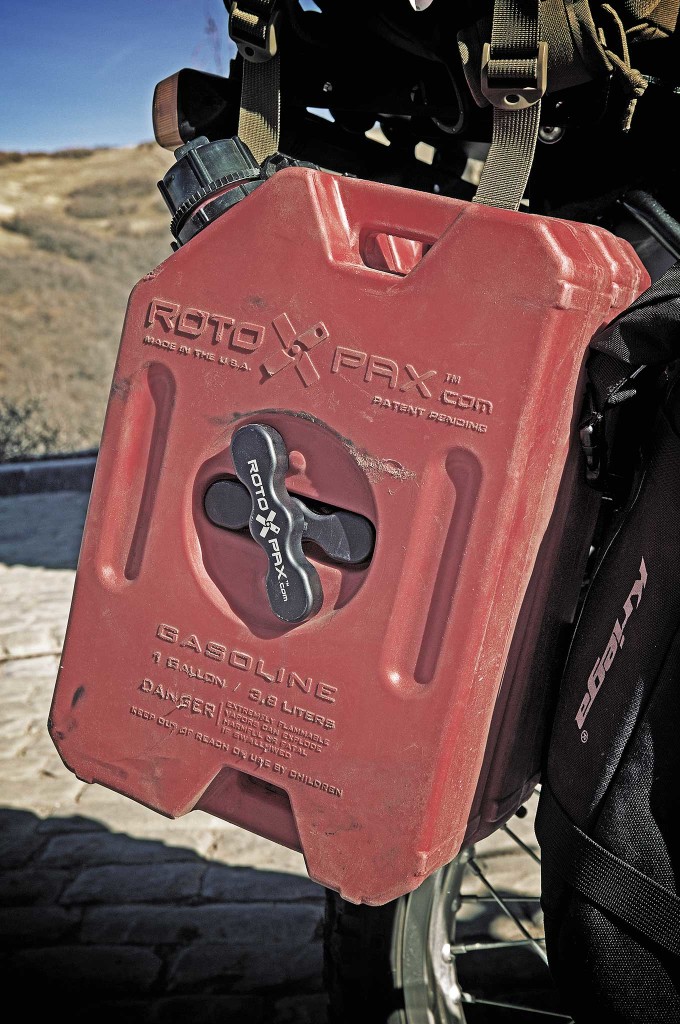
Let’s start with one of the most widely known and common fuel type, gasoline. Gasoline is commonly used in generators, vehicles, and other small engines. It’s a liquid petroleum product made from refining crude oil. It is highly favored for most applications because it is easily accessible, portable, and highly combustible, providing a high energy output of about 125,000 BTUs per gallon.
The downside is its relatively short shelf life of only 3-6 months. Even with stabilizers such as Sta-bil or StarTron Enzyme Treatment, gasoline might only last around 12 months. Additives are readily available online or at your local hardware store and are usually mixed in with a full tank of fuel according to the directions on the bottle.
Gasoline must be stored in approved containers. In the USA, it must be a leak-proof, vented, red container. Storage containers should be kept in a cool, dry area away from heat sources and in a well-ventilated space. Some municipalities regulate how much gasoline you are allowed to store on your property, which could be as little as five gallons, depending on local regulations.
What Uses Gasoline: Vehicles, lawn mowers, emergency generators, some heating systems, and commercial construction equipment.
Pros:
Cons:
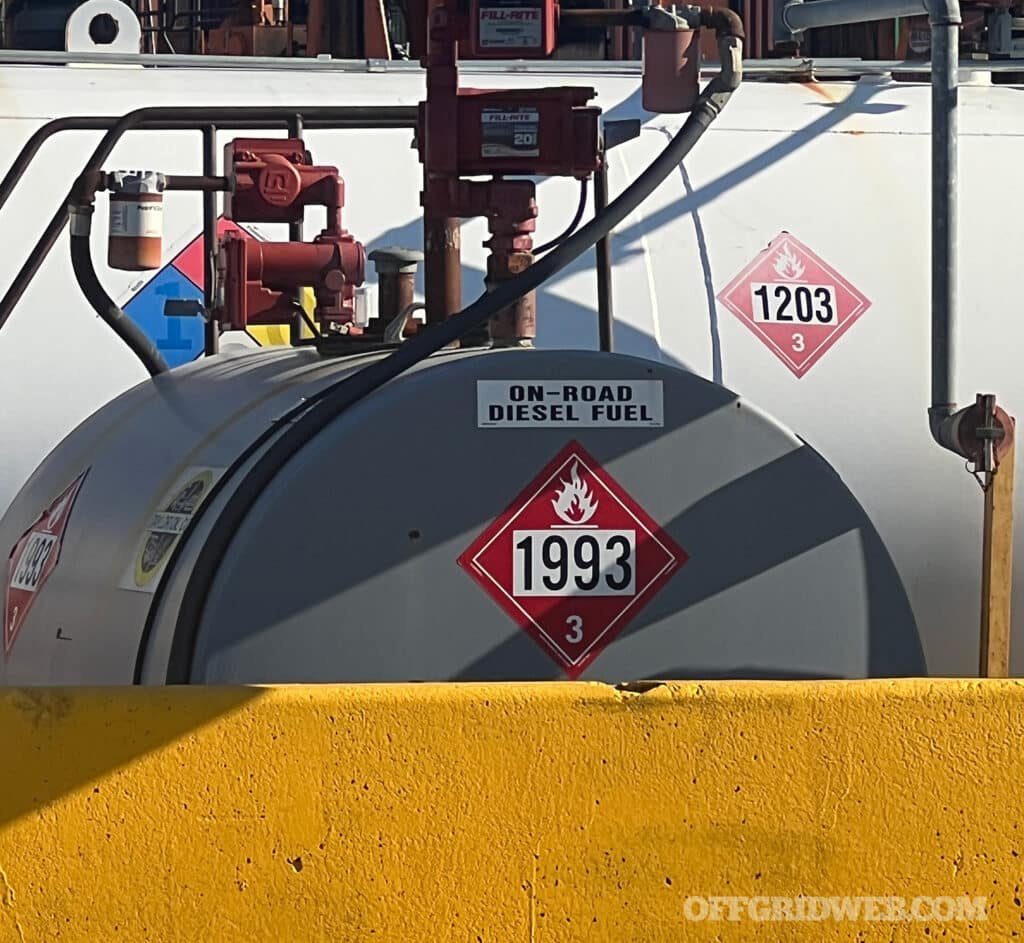
Next on our list is diesel, gasoline’s cousin, which has additional factors to keep in mind. Diesel is commonly used in heavy-duty machinery, generators, and increasingly in smaller passenger vehicles. It’s a byproduct of gasoline production and, therefore, widely available. Diesel has a higher energy output than gasoline, at about 139,000 BTUs per gallon, and can be stored longer—up to 2-5 years if stored properly and with the correct additives.
Diesel is not as volatile as gasoline but is still flammable. It should be stored in clean, dry areas away from heat sources and in a well-ventilated location. In the United States, diesel should be kept in yellow, airtight, UV-resistant storage containers and treated with anti-microbial stabilizers like Diesel 911 or Hot Shots Everyday Diesel Treatment to prevent algae or microbial growth, which can clog injectors and fuel filters.
In extremely cold temperatures, diesel can freeze or gel, so it’s common to treat it with a cetane booster like Boostane when storing it in freezing conditions. In cold enough temperatures, it is not uncommon for a working diesel-powered truck or machine to “gel up,” so many operators will use these products when the weather gets cooler, regardless of how long the fuel will be stored.
These products are also easy to come by at any fuel station that sells diesel, as well as auto parts stores, big box stores like Walmart, or online.
What Uses Diesel: Vehicles, Tractors and other farm equipment, and electric generators.
Pros:
Cons:
Biodiesel is similar to diesel in terms of usage but is made from old cooking oils, animal fats, or plant materials. While it’s not as widely available, biodiesel is cheaper and has lower emissions than regular low-sulfur diesel. It’s more common to find biodiesel mixed with low-sulfur diesel to make a bio blend.
Some diesel engines may not be compatible with biodiesel, so check compatibility if you’re considering switching. Unlike petroleum diesel, biodiesel is made from renewable resources but produces about 8-10% less energy than regular diesel. It has a shorter shelf life of about a year and is more susceptible to degradation. While it’s cheaper and better for the environment, it might not be the best fit for everyone.
What Uses Biodiesel: Some Vehicles, heating systems, cooking systems, and some electric generators.
Pros:
Cons:
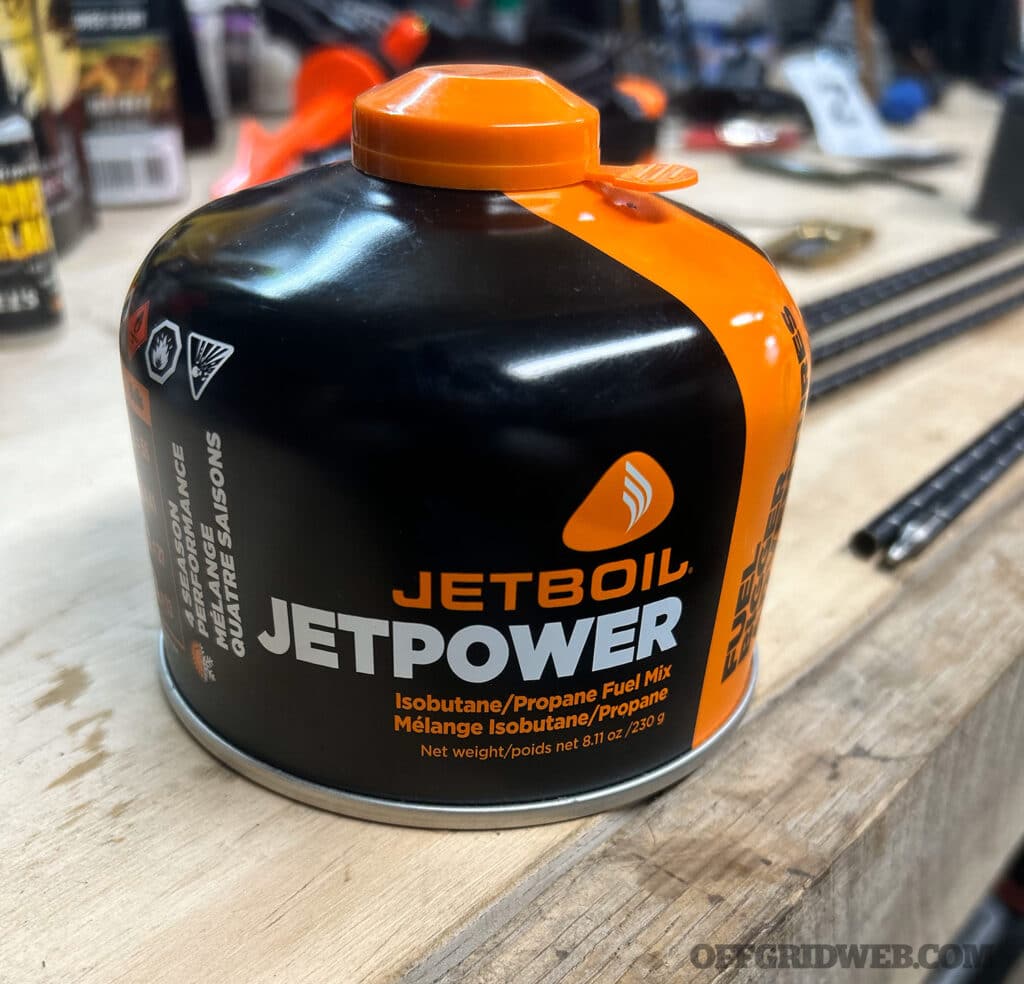
Camp fuel, otherwise known as white gas, is a highly refined form of gasoline that’s primarily used in camping stoves, lanterns, and portable heaters. White gas burns cleaner and produces less odor than regular gasoline, making it ideal for outdoor activities. Camp fuel comes in convenient fuel tanks directly from manufacturers like Coleman or Crown, with a long shelf life.
Due to its lack of impurities, white gas is known to last up to ten years if container remains sealed, making it the longest-lasting fuel we’ve covered so far. White gas should be stored in its original metal container and, like other fuel types, kept in a well-ventilated area that is cool and dry. Camp Fuel is small and portable making it an ideal fuel type for essential equipment when on the move.
What Uses Camp Fuel: Small portable camping equipment including stoves, lanterns, heaters, and grills.
Pros:
Cons:
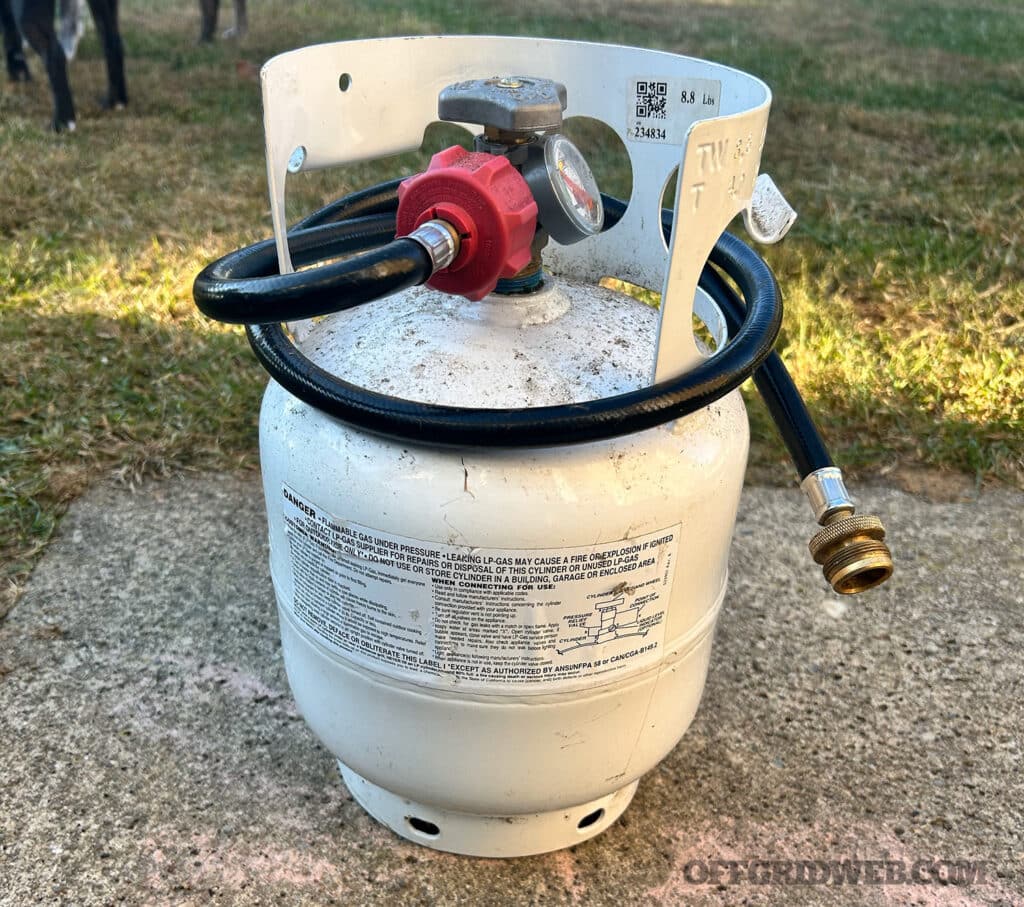
Propane is another common fuel used for heating, cooking, and power generation. It is a byproduct of natural gas production and is readily available, efficient, clean-burning, and has a long shelf life. Propane produces about 91,000 BTUs per gallon, making it a strong competitor in energy output. However, propane requires large fuel storage tanks and specialized equipment for refilling.
These pressurized tanks should be stored in well-ventilated areas, away from heat sources, and inspected regularly for leaks. Always store propane tanks outdoors and upright. When stored properly, propane can last indefinitely, which is arguably the most important factor when discussing fuel storage.
What Uses Propane: Heating systems, stoves, grills, water heaters, large home appliances, and backup generators.
Pros:
Cons:
Natural gas is a fossil fuel made up almost entirely of methane and is widely used as a clean-burning fuel, commonly found in homes for heating, cooking, and generating electricity. Unlike other fuels, natural gas is delivered directly to homes via pipelines. However, it can also be stored in specialized tanks for off-grid living.
Natural gas is odorless and invisible, so additives like mercaptan are introduced to detect leaks. If you’ve ever smelled it, you know the scent. It can be stored as compressed or liquefied natural gas (CNG or LNG), making it suitable for off-grid use. While natural gas is not affected by temperature, it’s crucial to inspect fuel storage tanks regularly for corrosion or leaks.
What Uses Natural Gas: Home and commercial buildings, large outdoor appliances, and some vehicles.
Pros:
Cons:
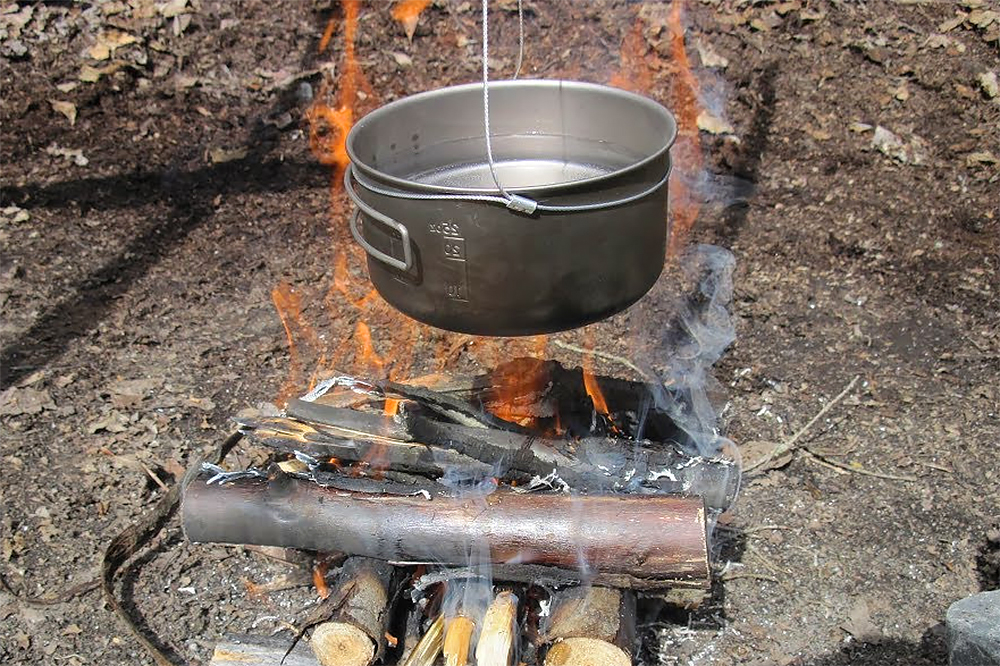
Wood or biomass is primarily used for heating and cooking in wood stoves or heaters. It’s renewable, widely available in many areas, and can often be locally sourced. There’s an old saying that heating with wood warms you twice—once when you cut it and once when you burn it. While inefficient and dirty, wood can be labor-intensive, requiring cutting, splitting, and stacking.
The type of wood you burn profoundly affects how it burns. Wood should be burned in proper stoves or well-ventilated areas, as improper burning can lead to air pollution issues like smoke, particulate matter, and carbon monoxide. Store wood off the ground, covered to prevent moisture, and away from the home to avoid pests and fire hazards.
Wood should be dried for at least 6-12 months before burning, with a moisture content of around 20%. Burning wood also requires regular maintenance, including ash removal and chimney cleaning to avoid creosote buildup. Despite these challenges, wood remains a widely used fuel source due to its low cost and availability.
What Uses Wood/Biomass: Home heating, outdoor cooking, campfires, portable stoves, and fire pits.
Pros:
Cons:
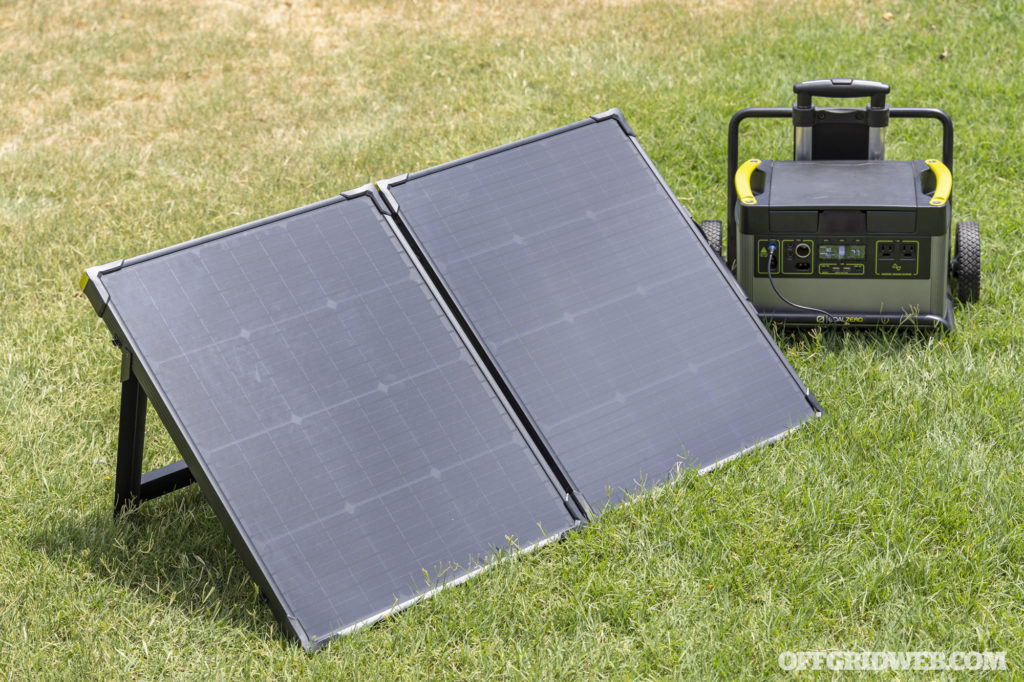
Finally, solar, wind, and water are not technically fuels but methods for generating electricity, crucial for off-grid living. These methods are clean, renewable, and have low ongoing costs once installed. However, they can be expensive to set up, rely on favorable weather conditions, and require maintenance, especially in remote areas. Electricity can be generated from solar panels, windmills, or even water wheels.
For a 2,500 sq ft house, you would need about 40 solar panels to produce enough power to run your whole house. Likewise, a small residential windmill can put out between 5 and 15 kilowatts of power depending on wind speeds, while a house of the same size uses, on average, about 1,000 kilowatts a month, so a windmill alone might not be enough to power a home. A water wheel in a flowing river, on the other hand, can produce up to 75 kilowatt-hours per day, which might significantly reduce your energy needs.
The energy created from these renewable methods is stored in batteries.
Batteries used to store generated energy can take up significant space. Proper surge protection and regular battery maintenance, including checking for corrosion, are essential. A well-thought-out system installed in the right location can provide plenty of power with minimal work.
What Uses Renewable Power Sources: Large Systems can power entire buildings. Smaller systems can be used to power small electronics and some full sized appliances.
Pros:
Cons:
Fuel rotation and maintenance are key to long-term fuel storage. You should have a regular schedule for rotating your fuel. Your oldest stock should always be used before newer stock, and you should keep a running tally of what needs to be used first. If you can use an alternate fuel source for a project that’s nearing its expiration before your ideal fuel source, it might still be in your best interest to do so.
Fuel quality impacts the longevity of the equipment it’s used in. If your pickup truck breaks down on the highway when you’re trying to escape because the fuel was contaminated with water, you’ll find yourself in a tough situation.
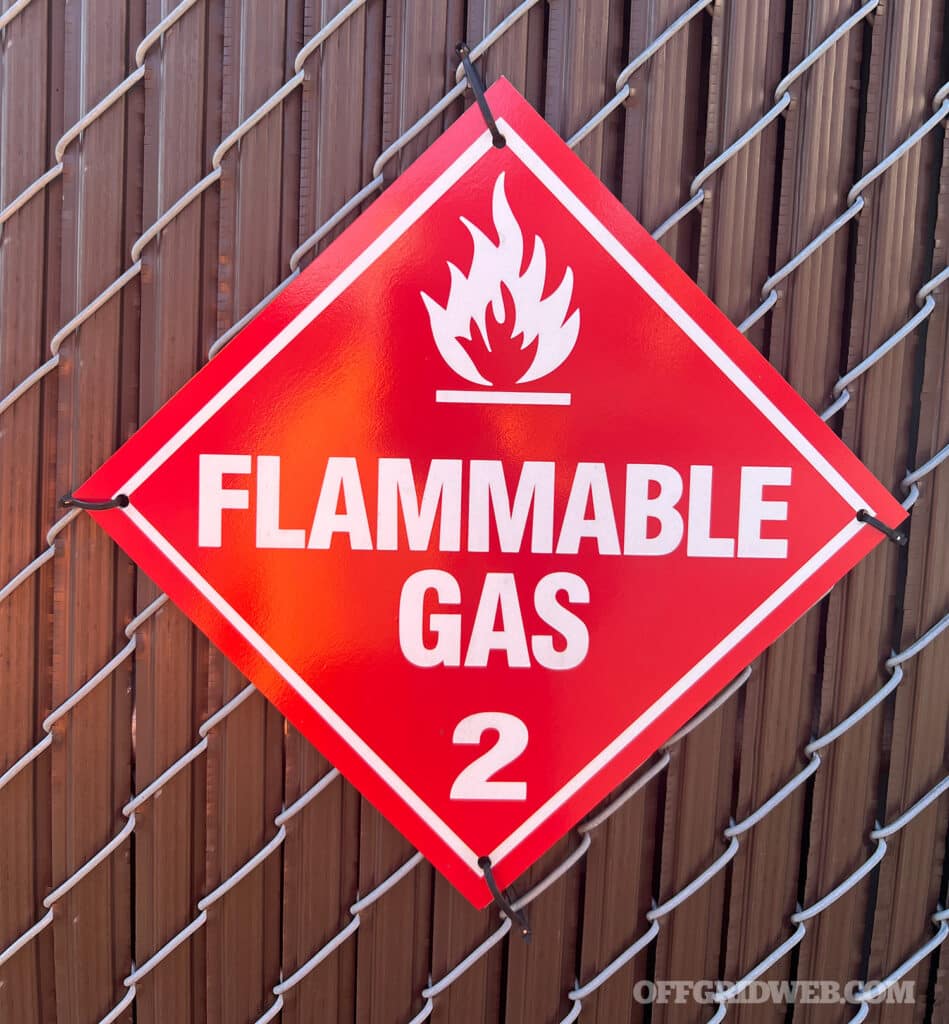
By now, it should be clear that most fuel types need to be stored in approved containers and kept in cool, dry, well-ventilated areas. All of these fuel types are potential fire hazards at varying levels of concern. It is important to follow local and state regulations when storing fuel.
Flame-retardant materials, fire extinguishers, and properly marked storage cabinets should be used where required.
Safety tips apply across the board when handling fuel. Regularly inspect containers for imperfections or corrosion. A fire extinguisher should always be nearby when handling any type of fuel, and carbon monoxide alarms should be used in confined areas.
Fuel types play a critical role in off-grid living. It’s important to choose the right fuel based on your needs, availability, and application. I think now that we’ve explored the conditions surrounding each of these fuel types and the conditions in which they can be beneficial and where each of them has drawbacks you can now make an educated decision about which would be best for you.
In a true off-grid situation, it’s likely you’ll use a combination of these fuels because each has its strengths and weaknesses. As the world faces increasing challenges related to energy security and sustainability, being proactive in these discussions can enhance our resilience.
By regularly rotating and maintaining our fuel supplies, and staying informed about evolving technologies and regulations, we not only prepare for potential emergencies but also contribute to a more sustainable future.
This article details a number of fuel sources that can be utilized if needed, but what if you need power on the go? Having back up fuel and power sources while on the move can make a difficult situation a lot easier. White gas in small camp appliances is a great option to ensure your food is cooked, you have some light, and maybe even a portable heater.
What if we need multiple electronics powered or the trucks fuel tank runs dry? Let's take a look at some options to ensure you can keep your vehicle running and your comms working!
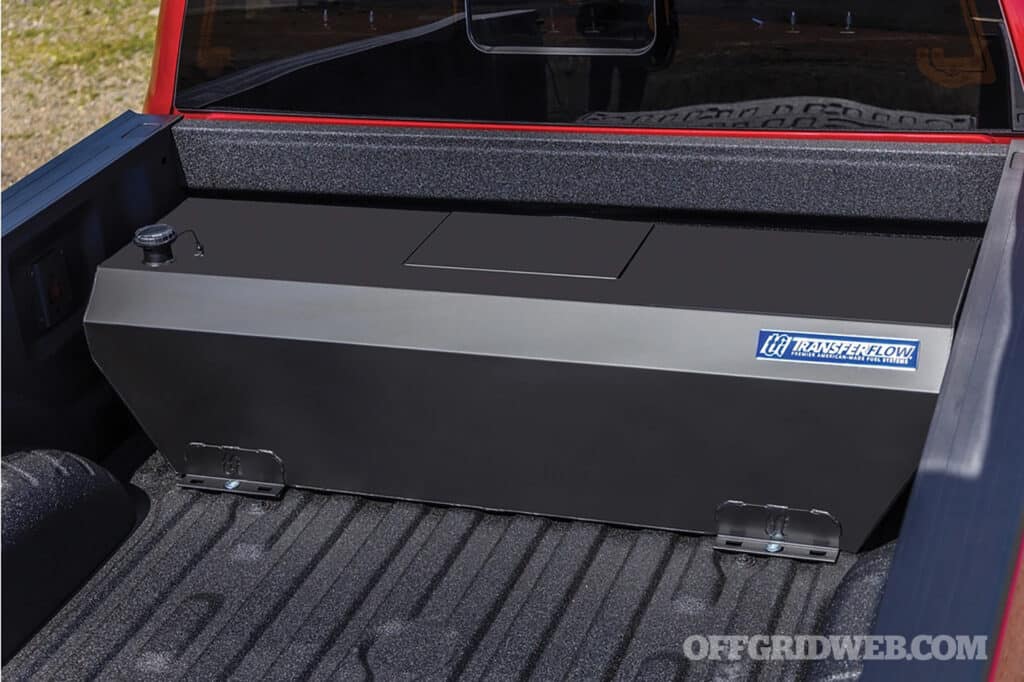
In-Bed Auxiliary Fuel System
Having a back up fuels system that that mounts to the bed of your pick up truck is an ideal way to haul extra fuel for a long trip or ensure you have enough in off grid scenario.
With options ranging from 40 gallons all the way to 100 gallons you can keep your truck fueled up and ready to go when you need it most! For more information on these systems check out transferflow.com
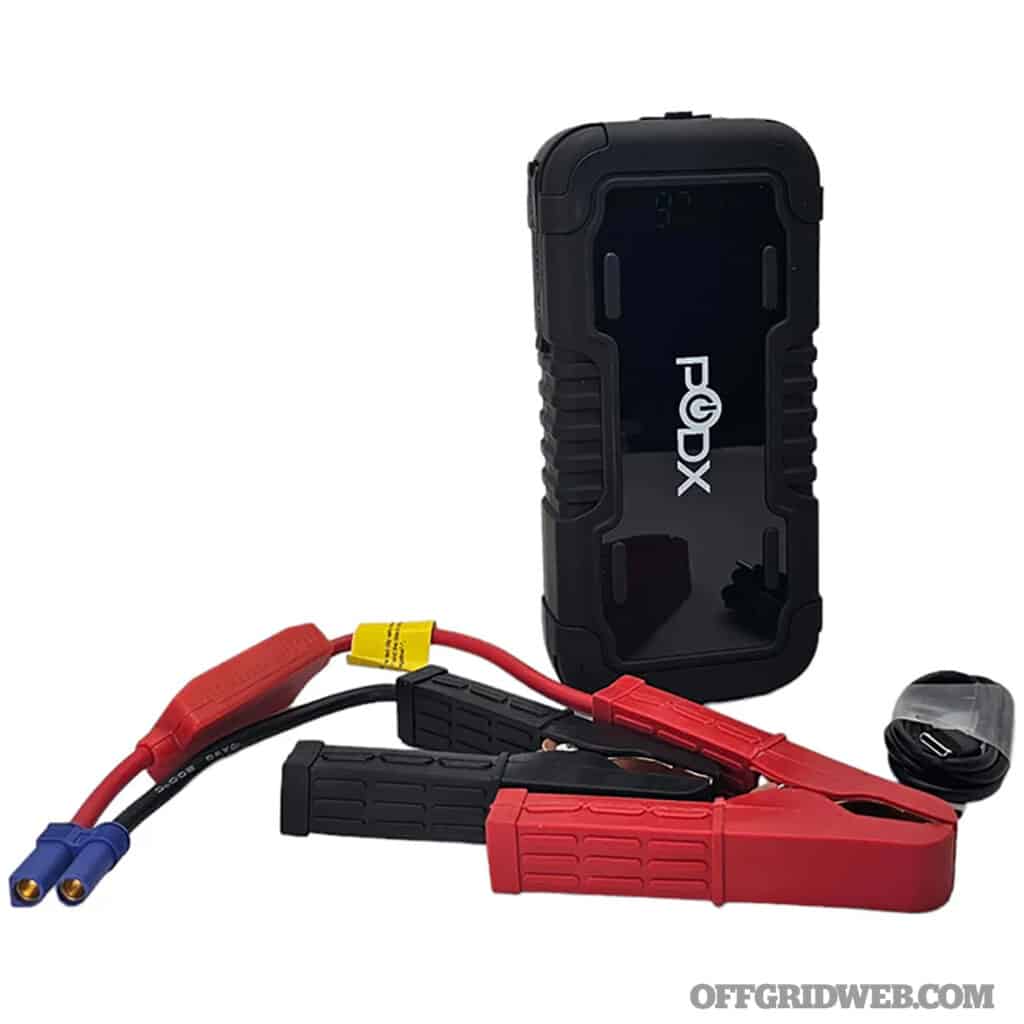
Portable Jump Starter/Power Bank Combo
Having the ability to jump start your vehicle in a pinch is valuable, but having the ability to charge your phone, navigation system, and other other small electronics with the same device saves space and money.
While these devices are not going to give you as many jumps as a traditional jump box they are small enough to charge up while your vehicle is running and can be easily thrown into your backpack as a charger for all your other devices should you need to leave your vehicle. Check out more of these at battlbox.com
Don’t miss essential survival insights—sign up for Recoil Offgrid's free newsletter today!
Check out our other publications on the web: Recoil | Gun Digest | Blade | RecoilTV | RECOILtv (YouTube)
 STAY SAFE: Download a Free copy of the OFFGRID Outbreak Issue
STAY SAFE: Download a Free copy of the OFFGRID Outbreak Issue
No Comments